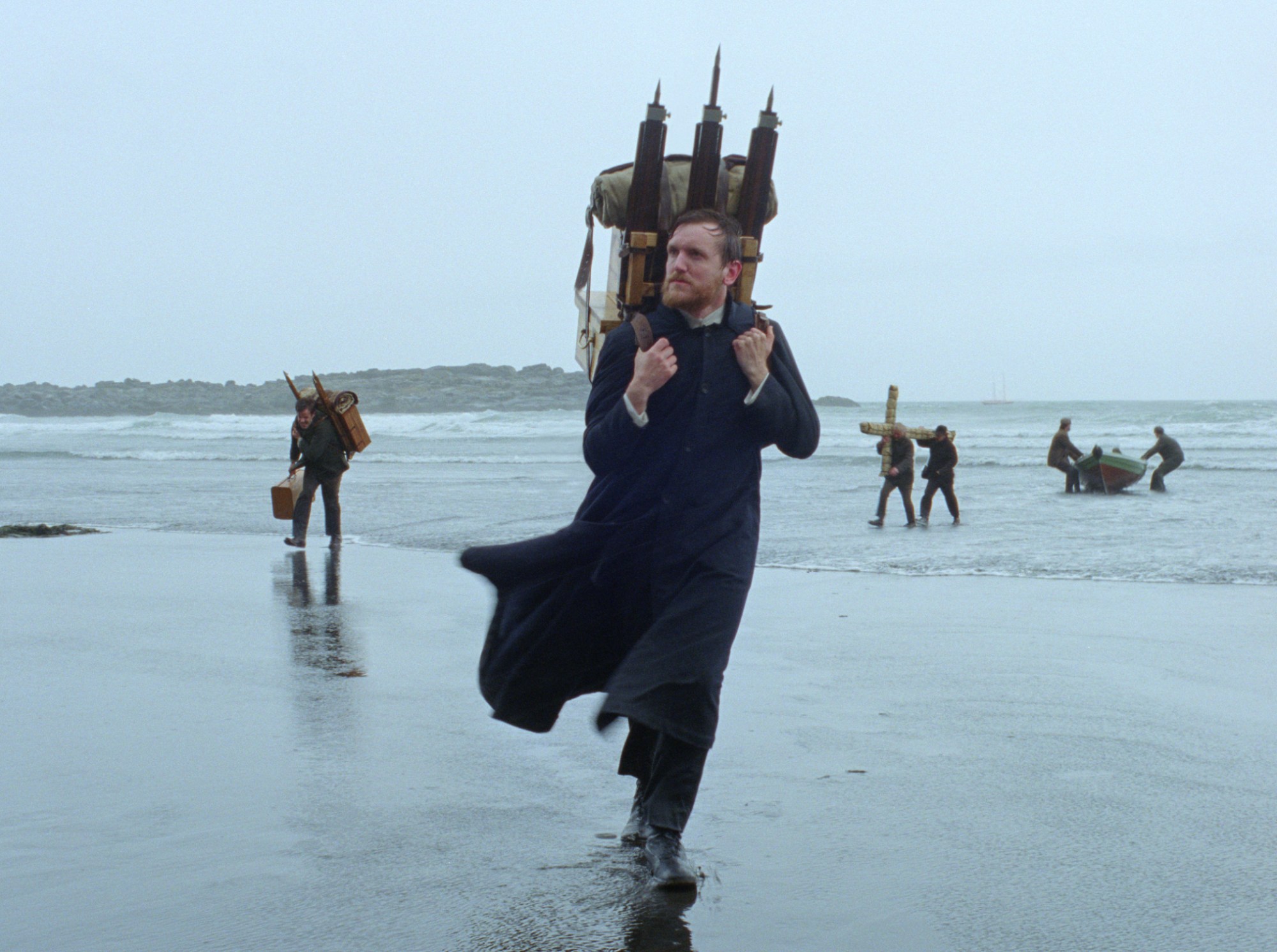
- Golden Globe Awards
Godland (Denmark, Iceland)
In the late 19th century, a young Danish priest travels to a remote part of Iceland to build a church and photograph its people. But the deeper he goes into the unforgiving landscape, the more he strays from his purpose, the mission and morality.
Godland, is a visually stunning movie, written and directed by Hlynur Palmason. The Icelandic director was inspired by a collection of 19th century photographic plates discovered in his native land’s wilderness, under the belief they were taken by a Danish priest. Palmason took the finding and fictionalized a 19th century story of ‘what if’ that introduces us to a cleric named Lucas, who sets out over land through the Icelandic back country to establish a church in a small, remote village. His only security is the resourcefulness of his rugged guide Ragnar.
Unfolding in a slow, deliberate manner, this Nordic western style drama balances not only the conflict Lucas faces of battling the topography, he needs to learn to ride a horse for instance, but also his internal battle with humility and his strident arrogance that his mission is divinely ordained. While the viewer might feel they are witnessing an old-style story of man versus nature, it soon becomes evident that the real conflict is a man confronting his own arrogance. And along the way, there are complicated reflections about masculinity, religion and spiritualism.
Recently at the London Film Festival, Palmason spoke to the publication Loud and Clear about the project.
“I grew up in Iceland and studied in Denmark, living there for many years,” he said. “I have always been between countries, in a way, and have always wanted to make a film about this feeling of communication or miscommunication, these opposites. I had a desire to put these two things that I know, love and hate together. It was a lot of fun.”
Much in the same way our protagonist uses his camera to capture the memory of his surrounding, so too does the auteur who has previously encountered many of the film’s provocative locales during past outings.
“These are places I revisit every year,” he continued. “I go and pick berries there, for example, in the same spot where Lucas ends up. I shoot these sequences that take place over a long time. For example, the scenes of the horse rotting, I shot those over two years. Revisiting locations is a huge part of my process. I have a camera in my car and if you’re shooting every week, it is sort of reminding yourself that you are shooting a film.”

